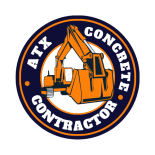Concrete demolition is a significant project that requires meticulous planning, professional expertise, and a well-structured budget. Whether you’re renovating your property or clearing space for a new construction project, understanding the costs involved is essential for a successful and efficient demolition process.
Factors Affecting Costs
Demolition projects are multifaceted endeavors, their costs and complexities shaped by diverse factors that guide the selection of techniques and resources needed. The size and nature of the concrete structure play a pivotal role; structures made of high-density or high-strength concrete often demand specialized equipment and techniques, directly impacting demolition expenses. Likewise, the presence of steel reinforcement within concrete structures can increase labor and machinery requirements, influencing overall costs.
Accessibility and location significantly impact demolition endeavors. Urban settings bring challenges like traffic navigation, stringent noise regulations, and intricate coordination with local authorities, culminating in escalated logistical and administrative costs. Meanwhile, sites with challenging terrain or adverse weather conditions might necessitate extra preparation or modifications, consequently impacting project costs.
Navigating through permitting and regulations is a crucial aspect. Regions mandating environmental impact studies before demolition inevitably add time and costs to the project. Moreover, adherence to stringent safety regulations could entail additional safety measures, specialized training, or equipment, contributing to escalated expenses. Zoning and historical considerations, especially in protected areas, might require preservation efforts or additional assessments, further impacting demolition costs.
The chosen method of demolition significantly affects costs. Unique structures may demand specialized techniques like selective or controlled demolition, which can be more intricate and costly compared to conventional approaches. Additionally, opting for eco-friendly demolition methods, although potentially more expensive initially, aligns with sustainability goals and might offer long-term environmental benefits.
Finally, structural complexity and the presence of hazardous materials significantly impact demolition expenses. Structures with hazardous materials like asbestos or lead demand specialized handling, removal, and disposal, elevating costs substantially. Complex or compromised structures might need additional structural assessments and reinforcement before demolition, influencing costs and project timelines.
Budgeting Process
Before commencing a concrete demolition project, an initial assessment and planning phase are critical. This involves a comprehensive structural analysis to evaluate the condition of the concrete structure slated for demolition. Professional engineers or demolition experts conduct this analysis to identify potential weaknesses, structural integrity concerns, or hazardous materials. It’s crucial to identify any asbestos, lead-based paint, or other environmental hazards that may affect the demolition process. Collaborating with experts ensures a thorough understanding of potential challenges and necessary precautions.
A detailed and accurate cost estimation forms the backbone of budgeting for professional concrete demolition. Labor costs should be meticulously calculated, considering the complexity of the demolition and the skilled labor required for various methods. Equipment costs play a significant role, factoring in the type and size of machinery necessary for the demolition, as well as waste removal equipment. Anticipating waste disposal expenses is crucial, especially for larger structures that generate substantial debris. This includes considering recycling costs or fees for landfill disposal.
Additionally, budgeting should encompass permitting costs, which often include application fees and regulatory compliance expenses. Allocating a contingency fund within the budget for unforeseen expenses or potential changes in the project scope is essential for financial preparedness.
Choosing the right demolition contractor is pivotal. Research and gather quotes from multiple reputable contractors. Consider their experience, track record, certifications, and insurance coverage. A thorough assessment of past projects and client testimonials provides insight into their reliability and work quality. Select a contractor who not only offers a reasonable price but also maintains high safety standards and a commitment to project deadlines.
Once a contractor is selected, reviewing the contract in detail is crucial. Ensure the contract includes a comprehensive scope of work, a clear project timeline, and a payment schedule aligned with project milestones. Provisions for unexpected costs or project changes should be clearly outlined in the contract to prevent disputes or misunderstandings later on.
Throughout the demolition process, regular monitoring of expenses and progress is essential. Maintaining open communication with the contractor helps in addressing any unforeseen challenges promptly. An active approach to monitoring allows for adjustments to the budget or project plan as needed. The contingency fund set aside earlier proves valuable in mitigating unexpected expenses, ensuring the project stays on track financially.
Conclusion
Budgeting for professional concrete demolition necessitates meticulous planning and strategic allocation of resources. This comprehensive guide delves into crucial aspects, from the initial assessment and cost estimation to contractor selection and contingency planning. By understanding the intricacies of the demolition process and factors affecting costs, individuals and organizations can create informed budgets, ensuring smoother and more efficient demolition projects within financial parameters. Managing expenses effectively not only ensures project success but also minimizes unexpected financial burdens, paving the way for a seamless and cost-effective demolition process.
